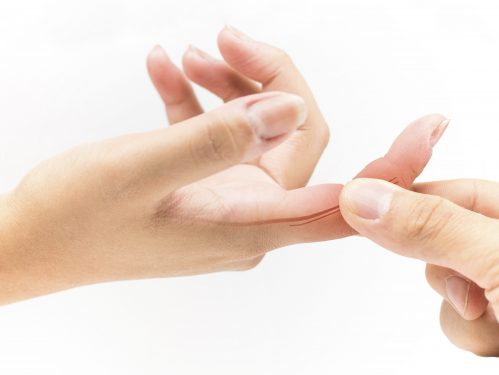Neuroma
Neuromas can be excised and if possible the nerve ends repaired together. Sometimes a nerve graft is required to bridge the graft. If this is not possible, the nerve end can be buried into deeper tissue to relieve the pain. Relocating the nerve end to deeper tissue removes it from the surface so it is away form points of contact where it can be knocked. Despite the many advances made in microsurgical techniques and instrumentation, the functional outcome of a repaired nerve will never be exactly the same as before the injury.

Neuroma SURGERY – FACTS
| Length of surgery | 1-3 hours, depending on the extent of injury |
| Anaesthesia | Regional anaesthetic |
| Hospital stay | Day case |
| Risks/complications of surgery | Frequent: Swelling, stiffness, discomfort on movement Infrequent: Infection, bleeding (haematoma), delayed wound healing, painful scar, damage to the nerve, neuroma, adhesions, complex regional pain syndrome, no improvement |
| Recovery | 2 to 4 weeks resume light activities, such as using a keyboard or writing with a pen |
| Driving | 8-10 weeks |
| Hand position | Elevation above the heart level |
| Follow up | 1 week, 6 weeks, 3 months, 6 months |
| Duration of results | Results can be unpredictable with neuroma surgery |
DOWNLOAD FURTHER INFORMATION
Neuroma
Any hand surgery procedure is a personal choice and understandably there are a number of questions that arise. This information sheet is a general guide for patients considering neuroma treatment under the care of Dr Mackenzie. It should provide the answers to some questions that you may have.
What is a neuroma?
Neuroma is a nodule developing on a damaged nerve.
Neuromas can be:
- In continuity- neuromas in a nerve that has not been completely severed and are of two main types; those in which the perineural sheath is intact and those in which the nerve is only partly damaged
- Neuromas in completely severed nerves- forms on the proximal stump of any severed peripheral nerve
- Amputation stump neuroma
What are the symptoms and signs of a neuroma?
- Pain and discomfort at the site of nerve injury and absent sensation distally
- Direct tapping over the nerve elicits pain
- A palpable mass that is tender to palpate and pressure of this mass may recreate the patient’s symptoms